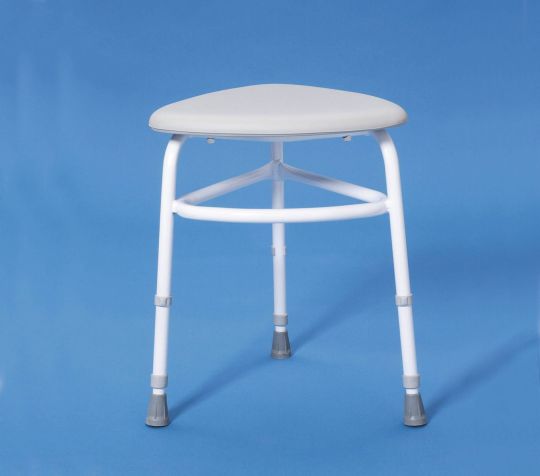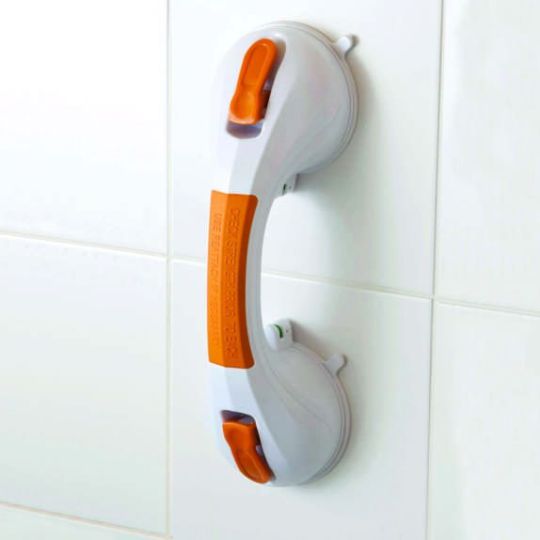#SeniorLiving
Explore tagged Tumblr posts
Text

13 notes
·
View notes
Text
Navigating the Maze of Aged Care Services
🌟 Discovering the Path: Navigating the Maze of Aged Care Services 🌟
Embarking on the journey of finding the right aged care services for your loved ones can feel like navigating through a maze. 🚶♂️ With so many options and considerations, it's easy to feel overwhelmed. But fear not! We're here to guide you through every twist and turn, ensuring a smooth and informed decision-making process.
Join us as we unravel the complexities of aged care services, offering insights, tips, and resources to help you make the best choices for your family. From understanding different types of care to navigating financial considerations, we've got you covered every step of the way.
Stay tuned for expert advice, real-life stories, and valuable resources to help you navigate the maze of aged care services with confidence and clarity. Because when it comes to your loved ones' well-being, finding the right path is essential.
2 notes
·
View notes
Text

2023 Fall
Art Experiences Class at Vantage Point Independent Senior Living Center- group projects on 12”x12” canvas boards
Zen Sampler- watercolor washed paper with micron pens
One Fish Two Fish-
Styrofoam printing plates and acrylic paint
Color craze-
Coloring pages with pencil, stencil cut out


#miniature art#miniature painting#group project#art experiences#process art#seniorliving#senior art class#vantage point#mini art#mini
2 notes
·
View notes
Text
Shower stools for disabled: The Homecraft Corner Shower Stool

Living with a disability can make everyday tasks challenging, and bathing is no exception. But it doesn't have to be! With the Homecraft Corner Shower Stool, you can shower safely and comfortably, without having to worry about slipping or falling.
What is the Homecraft Corner Shower Stool?
The Homecraft Corner Shower Stool is a height-adjustable stool with a padded vinyl seat. It's designed to fit neatly in the corner of your shower, giving you more legroom than most stools. The stool also has non-slip rubber feet for extra safety.
Why choose the Homecraft Corner Shower Stool?
There are many reasons to choose the Homecraft Corner Shower Stool, including:
Safety: The stool's sturdy frame and non-slip rubber feet help to reduce the risk of slips and falls.
Comfort: The padded vinyl seat makes showering more comfortable, especially for those with limited mobility.
Legroom: The stool's tripod design gives you more legroom than most stools, making it easier to shower and get clean.
Versatility: The stool is height-adjustable and fits neatly in the corner of your shower, making it suitable for virtually any shower tray.
Who should use the Homecraft Corner Shower Stool?
The Homecraft Corner Shower Stool is ideal for anyone with limited mobility, including:
Seniors
People with disabilities
People recovering from surgery or an injury
Pregnant women
How to use the Homecraft Corner Shower Stool
To use the Homecraft Corner Shower Stool, simply place it in the corner of your shower and adjust the height to suit your needs. Once you're seated, you can shower safely and comfortably.
Where can I buy the Homecraft Corner Shower Stool?
The Homecraft Corner Shower Stool is available from a variety of retailers, both online and in stores. You can also find the stool on the Homecraft website.
Conclusion
The Homecraft Corner Shower Stool is a safe and comfortable way to shower for anyone with limited mobility. If you're looking for a way to make bathing easier and more enjoyable, the Homecraft Corner Shower Stool is the perfect solution.
Shower stools for disabled: Order yours today!
#MobilityShop#MobilityShopUK#MobilityAids#LivingAids#BedroomAids#BathroomAids#KitchenAids#Wheelchair#WheelchairSale#showersafety#showerstool#bathsafety#bathingaid#disabledshowers#disabilityawareness#disabledliving#seniorliving#aginginplace#mobilityaid#eldercare#caregiving#bathroomideas#showerideas#homeimprovement#assistivetechnology#accessibility#Accessories#Rollators#Mobility#Crutches
3 notes
·
View notes
Photo

An elderly Brahmin waiting at the mandapam at kapali temple, near the water tank. Hoping and waiting for someone to approach him requesting that he perform some ritual. #hinduism #elderly #seniorcitizen #brahmin #love #hindu #seniors #india #seniorliving #elderlycare #aging #assistedliving #family #god #hanuman #retirement #brahman #healthcare #memorycare #seniorcare #eldercare #photography #instagram #sanatandharma #jaishreeram #shiva #instagood #photooftheday #hindutemple #photo https://www.instagram.com/p/CqMi1Y4SxTI/?igshid=NGJjMDIxMWI=
#hinduism#elderly#seniorcitizen#brahmin#love#hindu#seniors#india#seniorliving#elderlycare#aging#assistedliving#family#god#hanuman#retirement#brahman#healthcare#memorycare#seniorcare#eldercare#photography#instagram#sanatandharma#jaishreeram#shiva#instagood#photooftheday#hindutemple#photo
7 notes
·
View notes
Text
Exploring the Spectrum: What is the Highest Salary for Nurses in Chennai?
Nursing is a profession that is not only noble but also vital in any healthcare system worldwide. It's natural to have curiosity about the potential growth and earning possibilities in any career. If you are a Best Home Care Services in Chennai or are aspiring to become one, you might be wondering what the highest nursing salary in Chennai is. This article will delve into the various factors that influence nursing salaries in Chennai and provide insights into the earning potential for nurses in the dynamic healthcare landscape of the city.

Factors Affecting Nurse Salaries in Chennai: Experience: Experience is one of the crucial factors that have a significant impact on nursing salaries. Freshly graduated nurses generally earn less compared to those with several years of experience. Chennai provides a plethora of healthcare institutions ranging from public hospitals to private clinics, each with its own pay scale depending on the level of experience. Qualifications: Specializations and additional qualifications beyond basic nursing education can also have an impact on salaries. Nurses with advanced certifications and specialized training may be eligible for higher-paying positions, as they possess a higher level of expertise and specialized knowledge. Job Setting: The type of healthcare setting in which a nurse is employed can influence their salary. Nurses working in renowned hospitals or healthcare organizations may have higher earning potential compared to those working in smaller clinics or healthcare centers. Location: The location of the healthcare institution also plays a significant role in determining nursing salaries. Chennai being a metropolitan city may provide more opportunities for better-paying nursing positions compared to rural areas. Demand and Supply: The overall demand for nurses in Chennai, as well as the supply of qualified nurses, can impact salaries. If there is a scarcity of well-trained nurses in the city, the salaries may be higher due to the high demand. Earning Potential for Nurses in Chennai: The earning potential for nurses in Chennai is diverse and depends on various factors including the ones mentioned above. On average, nurses in Chennai earn a competitive salary with opportunities for growth in the field. By gaining experience, acquiring additional qualifications, and seeking employment in high-demand healthcare settings, nurses in Chennai can increase their earning potential over time. Know More : Homecare Services in Chennai Conclusion: In conclusion, the highest nursing salary in Chennai can vary based on experience, qualifications, job setting, location, and the overall supply and demand for nurses. Nurses in Chennai have the opportunity to earn a competitive salary and grow in their careers by exploring different avenues and investing in their professional
#homehealthaides#seniorcare#careforseniors#professionalcare#homecare#seniorindependence#elderlysupport#caregiving#dedicatedcaregivers#homenursing#qualitycare#healthcareservices#caringprofessionals#inhomecare#seniorliving#agedcare#seniorwellness#elderlycare#healthcareproviders#caregiversupport#elderlysafety#aginginplace#homehealthcare#compassionatecare#nursingcare#nurse#chennai#eldercar#o2saver#caretaker
2 notes
·
View notes
Text
Senior Fi Companion and Placement Services
About Senior FI: Your Compassionate Senior Care Advisor
At Senior FI, we're dedicated to enhancing the lives of seniors and their families through two core services:
1. Senior Placement Services: Navigating the world of senior living can be challenging, and that's where Senior FI shines. Our team of Senior Living Advisors is here to make the transition seamless. Whether it's finding the ideal Assisted Living, Independent Living, or Memory Care community, we tailor our services to your unique needs and preferences. We're committed to providing honest, compassionate guidance that ensures your loved ones thrive in their new home.
2. Senior Companion Services: We believe that seniors deserve more than just care; they deserve companionship and joy in their everyday lives. Our Senior Companion Services are designed to brighten your loved ones' days. Our dedicated companions offer not only assistance but also genuine friendship. They engage in activities, share stories, and provide a caring presence, creating meaningful connections that enhance the quality of life for seniors.
Whether you're seeking the perfect senior living arrangement or heartfelt companionship, Senior FI is your trusted partner on this journey. We're here to make senior care a fulfilling and enriching experience.
#senior care#seniorliving#senior placement services#senior living advisor#senior placement advisor#senior companion#senior assistance#senior companion services
3 notes
·
View notes
Text
Historic Shenango Inn poses safety concerns for neighbors [Video]
#SeniorsAssistedLiving#SeniorLiving#LongTermCare#MemoryCare#Seniors Assisted Living#Senior Living#Long Term Care#Memory Care
2 notes
·
View notes
Text
Return to Stanford Hospital
Three months after a stroke interrupted her peaceful retirement in Palo Alto, the survivor returned to the hospital for a MRI of her brain. Here she sits waiting to be transported to our residence at Palo Alto Commons after successfully completing the procedure in laboratories located in the old Stanford Hospital. In the background of the photo is the new Hospital where she was initially treated…

View On WordPress
2 notes
·
View notes
Photo

Best Memory Care Facilities In Dallas TX - Manchester Care Homes
Recognized as the best memory care facilities in Dallas TX, we take pride in providing your loved ones a chance to lead a better life while being well cared.
Visit website : https://manchestercarehomes.com/memory-care-facilities-in-dallas-tx/
#memorycare#seniorliving#dementiacare#elderlycare#assistedliving#alzheimerscare#seniorcare#memorysupport#seniorfacility
2 notes
·
View notes
Text

Today, on World Earth Day, let's remember to care not just for our planet, but also for the generation that built it 🌍🌲 Join us in honoring our elders and preserving the earth for generations to come ❤️
#WorldEarthDay#ElderCare#Sustainability#protect#save#planet#NNRCELCA#eldercare#elderlyhomecare#elderlycare#seniorcare#nursingcarecentrecoimbatore#palliativecare#palliativecarefacilities#seniorliving#assistedliving#eldercareservices#ElderCareCenter#coimbatore#supportivecare
4 notes
·
View notes
Text
2 notes
·
View notes
Text

Smart Savings: Why Straight Stairlifts Are Your Best Choice
Tired of feeling like a mountain climber every time you tackle your stairs? 🚶♂️ With a straight stairlift, you can make your daily routine smoother, safer, and even a bit more fun! 🎉
A straight stairlift is a motorised chair that moves along a rail installed on your straight staircase. Simple, easy to use, and budget-friendly, it’s the perfect solution to make getting up and down stairs effortless.
Top Reasons to Choose a Straight Stairlift: ✅ Sleek & Stylish – Blends seamlessly with your home decor ✅ Safety First – Equipped with safety belts and emergency stops ✅ Quick & Easy Installation – Our experts handle it all ✅ Affordable – Great value compared to curved models
Curious to learn more? Get a quote today and discover how a straight stairlift can improve your mobility and safety! 💺
📞 Call: 0800 358 9570 🌐 Explore Now: Straight Stairlifts - https://stairliftcostuk.co.uk/straight-stairlifts/
#Stairlifts#StraightStairlift#HomeAccessibility#SafetyFirst#SmartSavings#MobilitySolutions#StairliftCostUK#ElderlyCare#DisabilityAccess#HomeImprovement#AffordableComfort#SeniorLiving
0 notes
Text
Orange Suction Cup Grab Bar: A Safe and Stylish Addition to Your Bathroom

Looking for a way to improve the safety of your bathroom without sacrificing style? Look no further than the Drive DeVilbiss Orange Suction Cup Grab Bar with Indicator. This versatile and reliable grab bar is perfect for use in the shower, bathtub, near a toilet, or next to a chair or stairwell. It is also highly portable, making it easy to take with you on trips or to bring to a friend or family member's home.
The Drive DeVilbiss Orange Suction Cup Grab Bar features large suction cups that provide an incredibly strong hold on most surfaces, including tile, glass, and fiberglass. This gives you confidence and stability when using the grab bar, whether for support in the shower or to help you stand up from a chair or toilet.
One of the best things about the Drive DeVilbiss Orange Suction Cup Grab Bar is that it is so easy to install and remove. No tools or professional installation are required. Simply place the grab bar on the desired surface and press down on the suction cups. To remove the grab bar, simply pull up on the release levers.
The Drive DeVilbiss Orange Suction Cup Grab Bar also has a unique color indicator that shows whether the suction cups are properly affixed to the surface. The indicator will turn green if the suction cups are secure and red if they need to be reattached. This provides an added layer of safety and peace of mind.
In addition to being safe and easy to use, the Drive DeVilbiss Orange Suction Cup Grab Bar is also stylish. It comes in a white design with orange levers and handles, which adds a touch of vibrancy to any bathroom decor.
Whether you are looking for a temporary or permanent rails for shower, the Drive DeVilbiss Orange Suction Cup Grab Bar with Indicator is a great option. It is safe, reliable, easy to use, and stylish.
#bathroomsafety#grabbar#suctioncupgrabbars#showergrabbars#bathtubgrabbars#toiletrailings#mobilityassistance#seniorliving#aginginplace#universaldesign#orangetrails#orangeaccessories#bathroomdesign#bathroom#shower#bathtub#homeimprovement#accessibility#safety#mobility#aging#design#MobilityShop#MobilityShopUK#MobilityAids#LivingAids#BedroomAids#BathroomAids#KitchenAids#Accessories
2 notes
·
View notes
Text
Best Senior Living Facility in Folsom CA
Blissful Gardens is the top senior living facility in Folsom CA. We provide an enjoyable atmosphere with regular activities such as games, music events, and social gatherings to help seniors maintain their physical and emotional health. Our dedicated experts are committed to providing exceptional care and support for the residents. Contact us today for the best senior living experiences!
0 notes
Text

Trusted Care Homes in Longbridge, Birmingham
Looking for compassionate and reliable care? Our care homes in Longbridge Birmingham, offer personalized services tailored to each resident's needs. With a dedicated team providing 24/7 care, we ensure a safe, nurturing environment that feels like home. From daily assistance to engaging activities, we strive to enrich the lives of our residents. Explore the warmth and care offered at care homes in Longbridge, Birmingham today.
#CareHomesInLongbridgeBirmingham#ElderCare#SeniorLiving#CompassionateCare#QualityCare#BirminghamCareHomes
0 notes